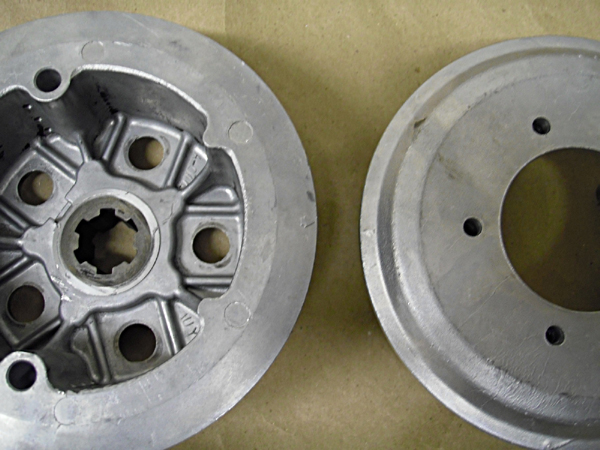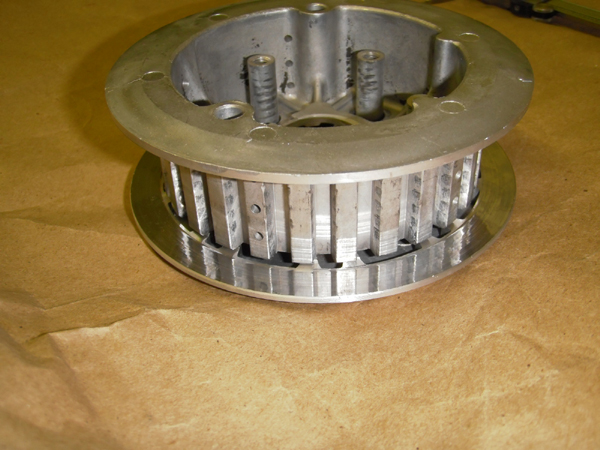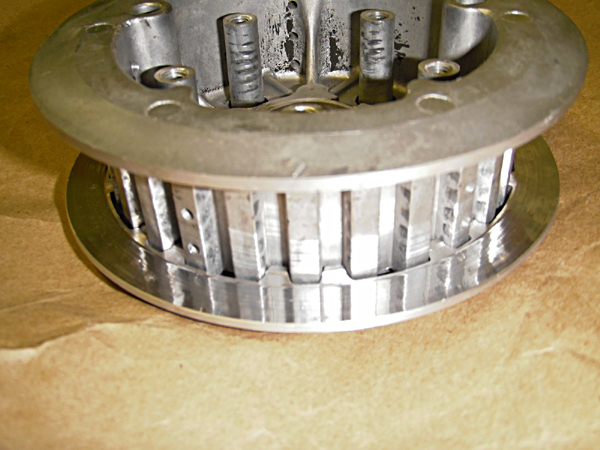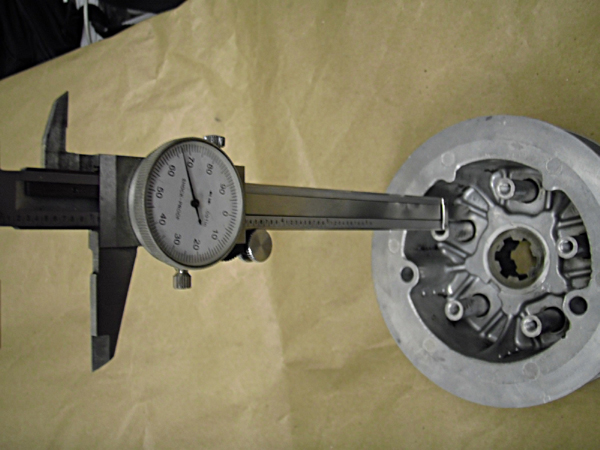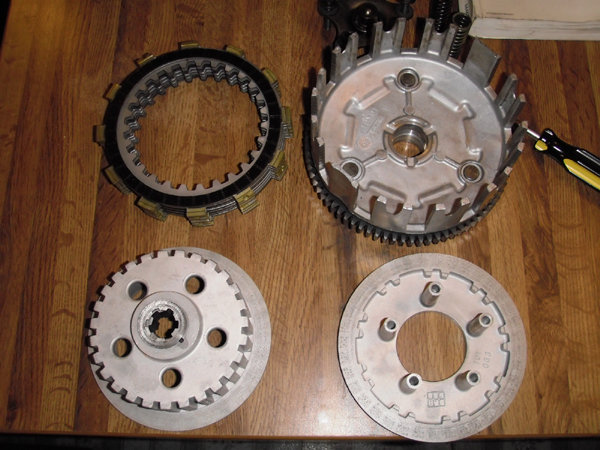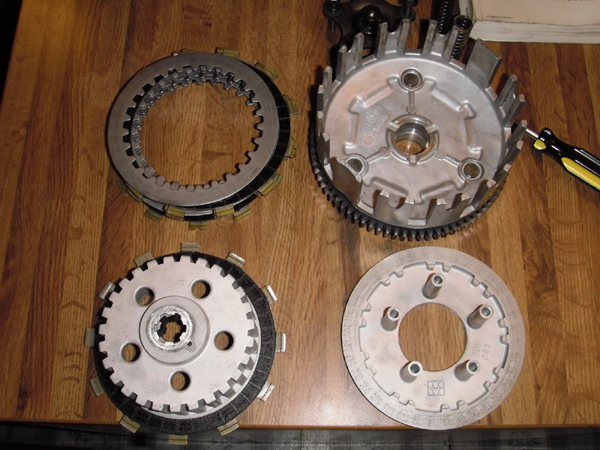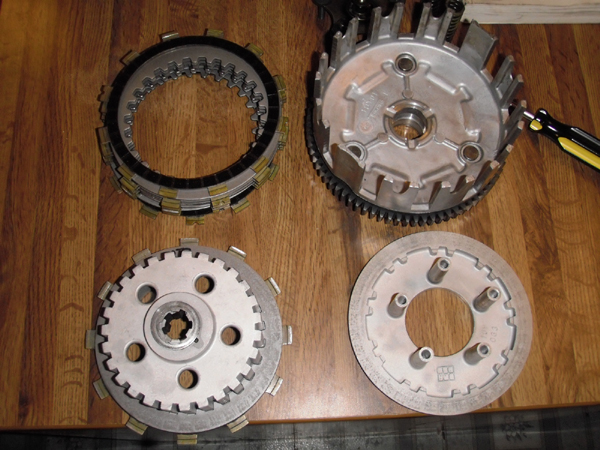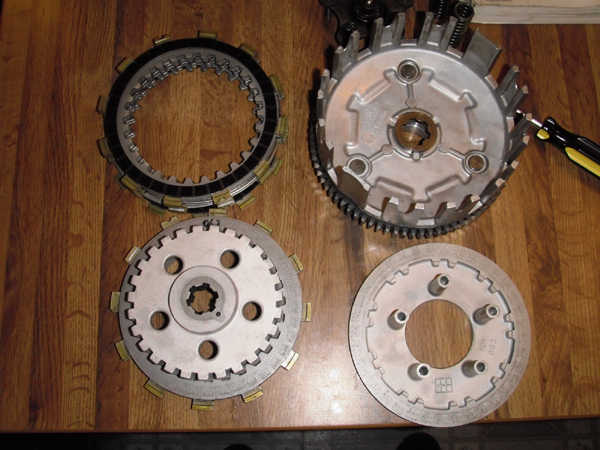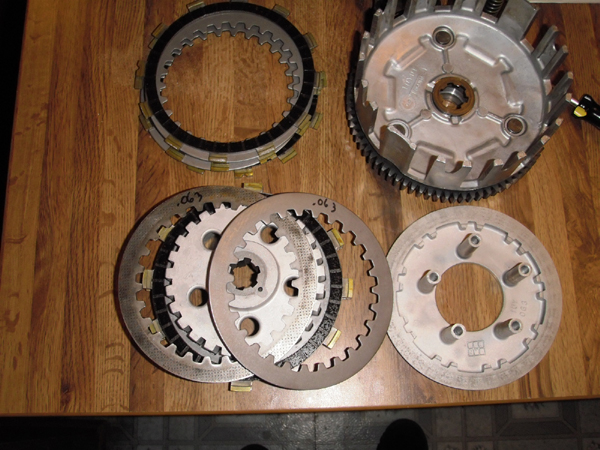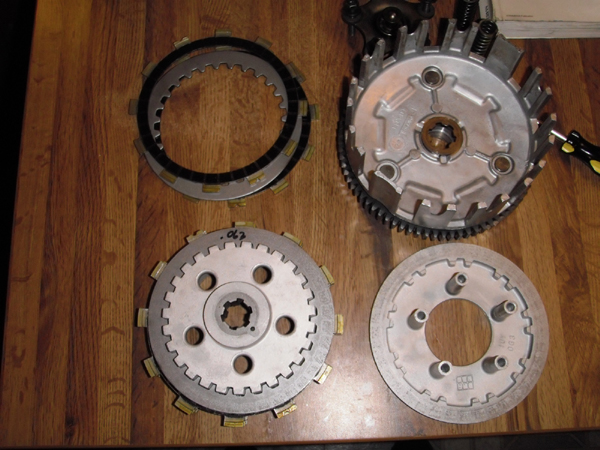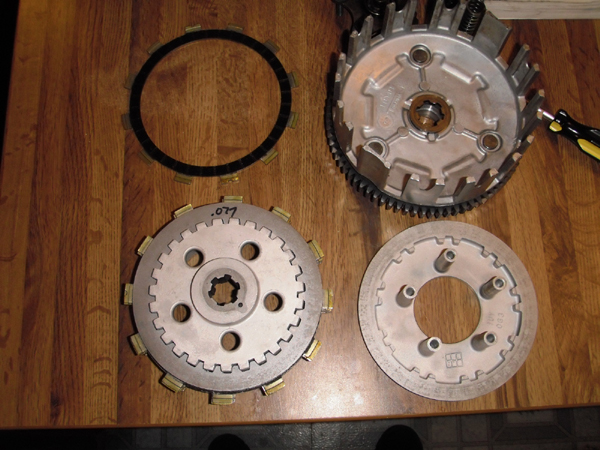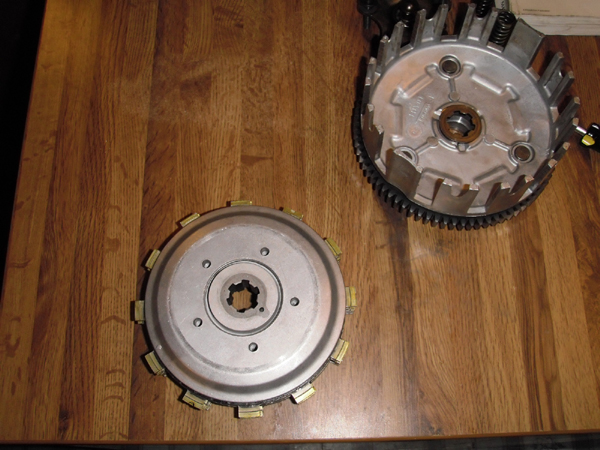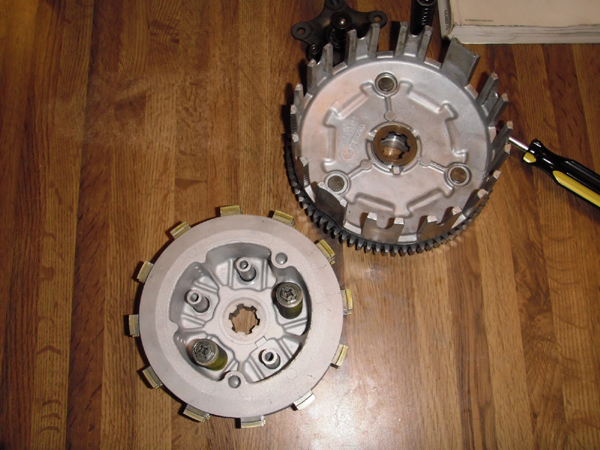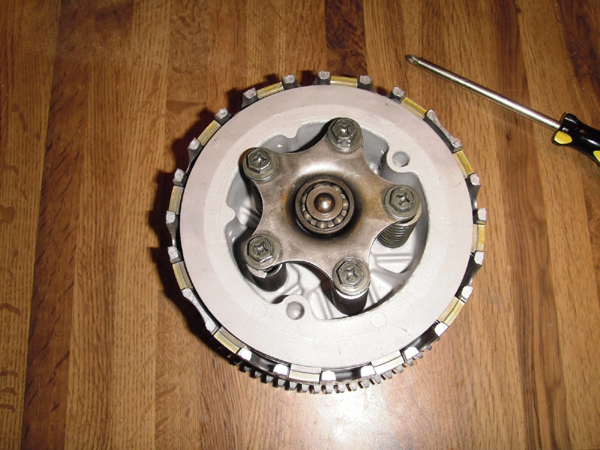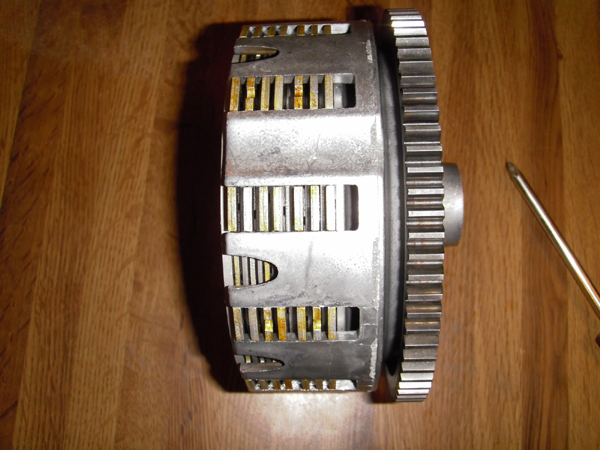Ok, one more go at this then I am done. I sat here and tried to replicate a scenario where the springs would bottom out and below is what I came up with. Based on the thickness of a lining, if an extra steel
and an extra lining were added, that would do it too. When you do the clutch mod, you only add an extra steel
but not another lining. Loosening the bolts
is not the correct way to do it by any means and to give that as advice to someone is just wrong.
Here are the alignment arrows on the two clutch hub parts.
If assembled wrong it will hold the inner plate above the splines.
Seen here assembled correctly the splines go up inside the inner plate.
Hard to read here but when assembled incorrectly the caliper reads .940"
Assembled correctly the caliper here reads 1.070. That is .130" difference and would probably be enough to make the springs bottom out.
It is not a matter of you necessarily rubbing me the wrong way. It is the matter of the advice you giving someone on here 100% wrong then you still trying to push your wrong advice off on me and everyone reading this. The procedure in the manual is very clear and never says anything about backing the bolts off. They are supposed to be torqued to a specific amount. The steel bearing plate is supposed to be tight against the threaded bosses. That said, if the clutch is put together where the splines don't engage, it should not work at all, but might if the stack thickness is thick enough. The only way it would maybe be thick enough is if an extra steel and an extra lining were added. When you do the mod, an extra steel is all that is added.
As far as whether your bolts will back out or not is irrelevant. They may or may not back out. They are loose in that steel plate, and over time that plate will work back and forth and probably eventually break the bolts off. It doesn't matter, it is not done right. If you choose to leave it, that is your problem. Just don't continue to try and tell people on here that it will work or is the correct way to do it. At this point you are rubbing me the wrong way because you aren't willing to listen to sound advice.




